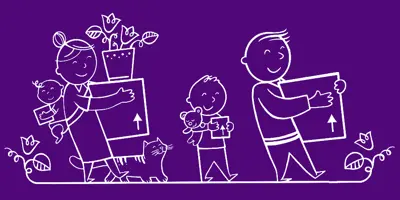
Taking care of the planet and living sustainability is much more than just a trend nowadays. Countries and individuals all over the world are taking initiatives to protect the planet, through both small and large actions. The terms “reduce, reuse and recycle,” are thrown around quite often. And for good reason. Waste reduction is important.
If you’ve heard of the 3 R’s of waste management – reduce, reuse and recycle1 – but you’re not entirely sure what they mean, you’re not alone. In this article, we’re going to discuss the 3 R’s of recycling, what they mean, and how you can use them to introduce sustainability in your life.
We’ll demystify the topic with straightforward reduce, reuse, recycle facts and provide some top tips on how to be more sustainable by answering what are the three r’s.
Reduce, reuse and recycle definition
First thing’s first: Reduce, reuse and recycle. We hear it all the time, we see the green triangular symbols, but what are the three r’s? What do they call us to do? Take a look at the exact definitions of the 3 R’s of waste management:
- Reduce: This refers to lessening the amount that we throw away.
- Reuse. This is about prolonging the life of an item that we would have otherwise thrown away, like washable feminine hygiene products, for example.
- Recycle. The last of the 3 R’s of recycling calls us to convert things we no longer need into new materials that can be used again.
The fourth R: reduce, reuse, recycle, refuse
You now have a better understanding of the “reduce, reuse and recycle” definitions. But did you know that there’s actually a fourth “R” that’s been added? It’s true and it’s called “refuse.” The reduce, reuse, recycle, refuse approach calls for an extra step that actually comes right at the beginning.
It calls on people to refuse, or say no, to products that aren’t good for the environment. In other words, trying to look for reusable or sustainable alternatives instead. This is a great way to get closer to the root of the problem— using fewer harmful products (or none at all) in the first place.
Reduce, reuse, recycle facts
Now that you have a basic introduction on the 3 R’s and exactly what they mean, let’s talk about some reduce, reuse, recycle facts and what we’re doing to reduce waste.
As part of our commitment to developing sustainable products, we contribute towards a circular economy, mainly by making products that meet your needs while also enabling sustainable consumption. And for all of us to do our bit and contribute towards a circular society, we all need to reduce, reuse and recycle more.
Here’s a glimpse of our strategy that outlines what we're doing as part of our commitment to reduce, reuse and recycle:
- We're always innovating improvements to make our products, services and production more efficient
- We design all our products and services with circularity in mind
- We follow strict procedures to ensure that all materials and chemicals in our products and production are safe for you, for our employees and our environment.
While these facts are certainly promising at first glance, the hard truth is that it’s not enough if everyone’s not pitching in. Let’s discuss some of our top tips on how to promote waste reduction in your household and live with a reduce, reuse and recycle mindset.
How to reuse, reduce and recycle
Here are our tops tips to help you reduce, reuse and recycle more with different ways to recycle.
How to reduce, reuse and recycle: Tips to reduce
- Buy good quality products that optimise your use or last longer - like Cushelle Longer Lasting toilet roll - so you can use the product longer and compost or recycle after use.
- Reduce your energy consumption by turning off lights when you’re not in the room, unplugging electronics when not in use, and only using washing machines with a full load.
- Only use what you need. This applies to so many things, from food to toilet paper, and means you can make many small changes in your day-to-day routines that can make a big difference.
Tip: Help reduce your paper usage by choosing a good quality toilet paper, such as Cushelle, where just one sheet is enough.
How to reduce, reuse and recycle: Tips to reuse
- Swap disposable plastic bags for reusable fabric ones.
- Use reusable containers when buying or storing your food.
- Buy second-hand clothes and other items at thrift shops, rather than always buying new.
- Reduce what you dispose of by reusing food scraps and other compostable materials in a compost heap. If you have a garden, this is a great way to turn your unwanted food scraps into a fantastic fetiliser
How to reduce, reuse and recycle: Tips to recycle
- Buy products that have easy ways to recycle, also taking into account their packaging.
- Understand what can and can’t go in your recycling bin, and be sure to always rinse empty food containers like yoghurt pots before recycling and only place suitable items in the recycling bin.
- Find recycling centres that will accept items that you’re not able to put in your recycling bin.
- Give items a new lease of life by repurposing them. Why not create these adorable toilet roll animals out of your finished toilet roll tubes?
How Cushelle is committed to the 3 R's of recycling
We’ve said it before and we’ll say it again: The only way to really make a difference in protecting our planet is for everyone to do their part. At Cushelle, we are committed to making caring, innovative and more sustainable products.
Let’s start with reduce: we’re cutting down the amount of packaging material used for our products. Our material-efficient solution delivers more product with less packaging overall. We’re championing the switch to coreless products that last longer to reduce the amount of packaging needed, such as Cushelle Tubeless.
As a means to reuse we’re committed to increasing the use of recycled materials in our packaging, including replacing part of our plastic packaging with recycled plastic. We’re aiming for a rate of 85% renewable or recycled materials by 2025 for all packaging. In Europe, the plastic packaging for our consumer tissue will be 33% PCR (post-consumer recycled plastics). All Cushelle products come packed in recyclable plastic containing 33% PCR already.
As for recycling, we’re aiming for 100% recyclability by 2025. Reducing, replacing and recycling our packaging is a key priority for us. With the right facilities and collection schemes, our packaging is already recyclable. We’re also very keen to collaborate with consumers, communities and enterprises to increase the amount of our packaging that is recycled.
So, there you have it! Now that you have a better understanding of the 3 R's of recycling and how to be more sustainable. You can start to reduce, reuse and recycle even more.
Sources:
1Ministry of the Environment, Government of Japan; 3R Initiative
Related articles
2 Amazing Ways to Decorate With Recycled Packaging
Learn how to make recycled wall art with two DIY wall art ideas. Click here for tropical wreath and tealight lantern homemade wall art tutorials.

Beautiful Recycled Cardboard Wall Decorations
Looking for creative ways to recycle? We have some ideas for cardboard arts and crafts projects to decorate your wall. Click to read more.

The ultimate family moving checklist
Find out how to put together the ultimate family moving house checklist. Click to read about all aspects of moving out cleaning and admin.

How to stop lint ruining your fresh laundry
Learn how to remove lint and how to get tissues out of washed clothes with these washing machine hacks and laundry tips. Click to learn more!

Makeup storage ideas for small spaces: Easy DIY makeup organiser
Need makeup organiser ideas? Click here for an easy-to-follow step-by-step guide on how to make DIY makeup storage out of toilet roll tubes.

How to organise your desk for a clear mind
There’s how to organise your desk so it looks pretty, and then there’s how to organize desk spaces properly so they’re pretty and practical. Here’s how.



